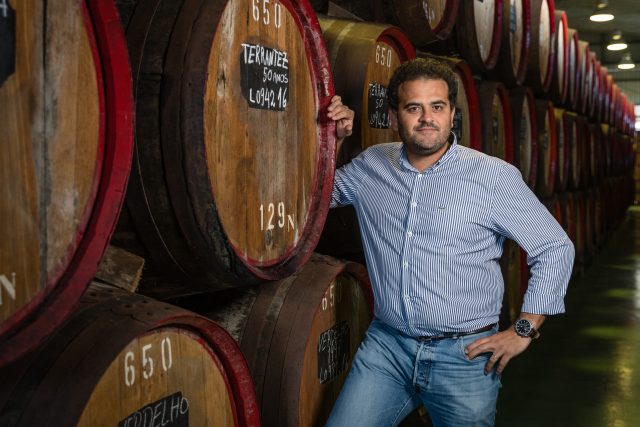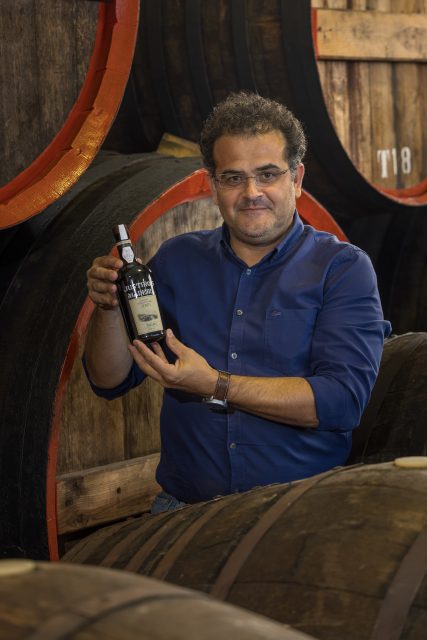This website uses cookies so that we can provide you with the best user experience possible. Cookie information is stored in your browser and performs functions such as recognising you when you return to our website and helping our team to understand which sections of the website you find most interesting and useful.
Master Winemakers Top 100: Juan Texeira
Juan Texeira, chief winemaker at Justino’s, features as one of our top winemakers in this year’s Master Winemaker 100 guide. He speaks to db about trusting the ageing process, Madeira’s beautiful “fajãs” and the challenges facing the island.

Born in 1971, Juan Teixeira chose rosé as the focus of his research paper when he studied oenology. Following his degree, he then spent three years as winemaker for the renowned Tejo estate Quinta do Casal Branco. However, at the turn of the millennium, Teixeira moved to Madeira and joined the world of fortified wines, taking a job with one of the island’s oldest and largest producers, Justino’s. Since 2009, he has held the role of chief winemaker and general manager with the company.
His Justino’s Madeira Verdelho Frasqueira 1998 won a Master medal at the Global Fortified Masters 2023.
Describe your winemaking approach in no more than three words.
Low-intervention winemaking.
What’s your favourite part of the job?
I like the harvest season and the contact with the different grape growers who supply us. But I especially like making blended wines because it allows us to take the best of each wine and to enhance our experience. Seeing people enjoying wines we make also gives me pleasure.
Which aspect of the job keeps you awake at night?
The future of viticulture on this island. There are more than 600 grape growers spread throughout the island that supply grapes to Justino’s Madeira. Vines are grown on the hillsides of the island, in small terraces and mostly grown on trellises. Mechanisation is not possible. The high age of grape growers, lack of interest among young people, real estate pressure and competition from other agricultural crops will pose problems in the future, and a lack of grapes could be a reality.
What’s your go-to drink at the end of a long day?
A beer or good white wine.
What’s the best piece of advice you’ve ever been given?
Know how to wait. Time is the key to a fortified Madeira wine, where the long oxidative process transforms it.

What was your greatest winemaking mistake?
It was a joint mistake! A colleague and I had to pump over a wine during fermentation after adding an oenological product. I connected the pipe to the lower tap. My colleague was in charge of placing the pipe on the top of the fermentation tank. The problem is that the pipe was placed by my colleague in another vat. After some time pumping, one of the tanks logically started to leak as it was full.
What’s the most important winemaking lesson you’ve learned so far?
Do not condemn a Madeira wine that does not have special characteristics when young, because the way it evolves depends on many things. The history, age and capacity of the casks, as well as the location in the wine cellar during the long oxidative ageing, can change our negative initial perception – and the wine could transform outstandingly.
Which figure outside the world of wine inspires you?
My family. I have spent and continue to spend a lot of time abroad, and just knowing that I am producing one of the best fortified wines in the world makes my work more valuable, somewhat compensating for my absence.
Where would your fantasy vineyard be?
A Malvasia Cândida vineyard located in one of the best-known “fajãs” on Madeira. These small platforms are located all along the coastline and were created by rock falls as a result of erosion. They are hot places with strong maritime influence.
If you weren’t a winemaker, what would you be doing and why?
Maybe graphic arts. Photography could also be an option as I believe I have some art in capturing details and special moments.
What’s the most memorable food match you’ve had with one of your wines?
Thin apple pie with Madeira wine ice cream and our Verdelho Colheita 1997.
What role does sustainability have to play in a Master-winning wine?
Sustainability is the theme of the future, and in a Master-winning wine this aspect must be present. Our Verdelho Frasqueira 1998 is a wine with little oenological intervention that also benefits from the adoption of good practices for the efficient use of water and energy in the winery.
Which type of wine do you drink most regularly?
Red wines from Portugal, especially the Douro Valley.
Your home is on fire: which bottle do you save?
Justino’s Madeira Malvasia Frasqueira 1993, as it reflects everything that a high-quality Madeira wine can have: high aromatic complexity, great concentration and an endless aftertaste.
What are your top three markets and importers?
France (La Martiniquaise)
USA (Broadbent Selections)
Japan (Suntory)
And which market would you most like to enter?
South Africa

Related news
Crealis shakes up sparkling closures with paper-based foil
Is Monastrell the climate-adaptable grape the industry needs?
Matching terroir to variety at Burgenland’s Kollwentz winery

